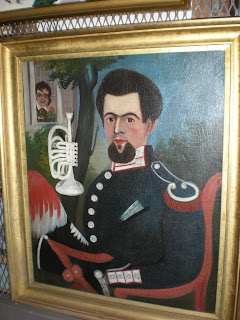
January is a great time in New York City for museums and collectors looking to add to their holdings. Two major antiques shows, the Winter Antiques Show and The American Antiques Show, take place concurrently during the third week of January every year. I always go down to the city to see colleagues and peruse the offerings. This year was an exceptional one for new acquisitions for the Fenimore Art Museum. Here is one purchase that brought back memories of my childhood in Elmira, New York. 

Elmira is home to many things, but it is best known to many people as the site of the Elmira Reformatory, a prison built in 1876 and situated on a hill just north of the city. I have many memories of driving by the reformatory and looking up at its formidable walls. We never had any contact with the inmates, although every so often you might see low-risk prisoners working in various locations around Elmira, always under guard. We knew – or assumed – that many of the prisoners had been brought to the Reformatory from New York City, but we never gave a thought to who they were. They were anonymous faces behind that massive building façade in the distance.
It took an accidental encounter at The American Antiques Show last week to give me some insight into the people behind the prison walls of my hometown. I was working my way through the show when my cell phone rang. Embarrassed to be taking a call in a busy aisle, I slipped into the nearest booth and went behind a partition to take the call.

While talking on the phone, I looked up at the back side of the partition and absent-mindedly read a label next to an object. The words “Elmira Reformatory” caught my eye. After I hung up I realized what I had surreptitiously found: a carved board about 25" tall depicting WWI soldiers made by an inmate at Elmira in the 1930s for the Reformatory’s Teacher of Social Services, a Peter J. Woloson. The carving had been owned by Mr. Woloson’s son, who was offering it for sale through the dealer.
This was just too coincidental, and the price too reasonable, to pass up. So here it is, now in our collection. The only documented piece of prison art from the Elmira Reformatory that I have seen in my many years of studying New York State folk art. I should note that Mr. Woloson’s son is still alive, and has many memories surrounding this piece. Memories that I intend to capture in the near future and preserve for posterity. My great hope is to find out the name of the inmate who did the carving.
And I’m still shaking my head at the notion that a phone call at just the right moment, and a quick decision to duck into just the right booth, led me behind the prison walls of Elmira for the first time in my life.



































